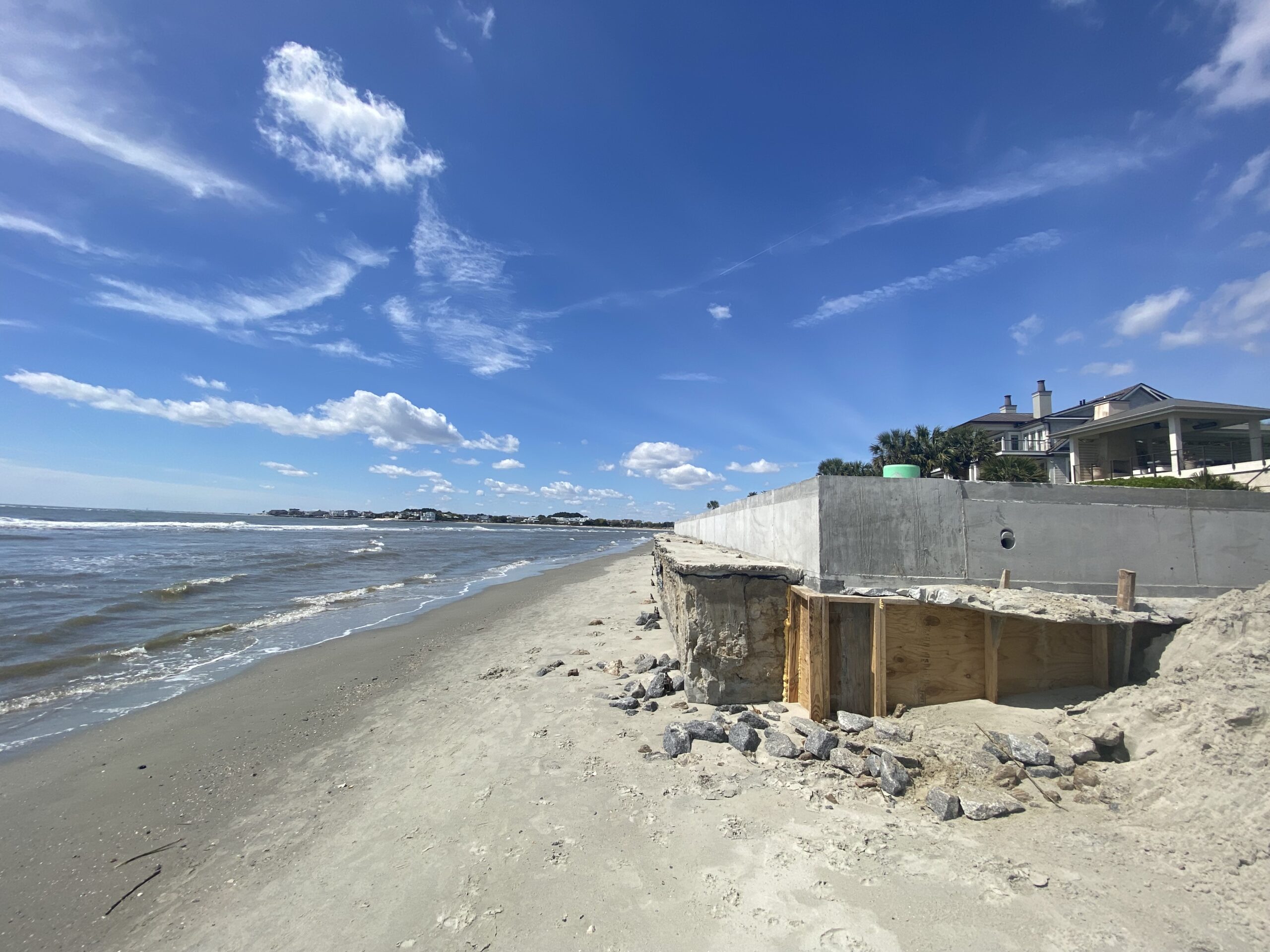It’s no secret that many of our beaches have taken a beating over the last handful of months. Increasingly intense and frequent storms have eroded some of the places you and I have the pleasure of enjoying, along with incredibly important seabird habitat like Deveaux Bank.
These weather events should not be a surprise to us and in fact, should be reason enough for our state leaders to support and continue creating thoughtful policies that address our changing realities along the coast.
Last year we worked with the Southern Environmental Law Center to encourage the SC Real Estate Commission to update the real estate disclosure form to include language addressing erosion and renourishment. We also served on the Department of Health and Environmental Control’s SC Beach Preservation Work Group to develop recommendations that better protect our public trust resources and provide clarity for beachfront property owners. We are working this session at the Statehouse to usher the passage of these regulations.
But more locally, we are seeing new threats. Some property owners have taken matters into their own hands, building erosion control structures that are in direct conflict with our state’s longstanding Beachfront Management Act.
One such location where this has taken place is on the Isle of Palms, where one property owner began placing all sorts of materials within DHEC’s “critical area,” which is state jurisdiction. This included filter fabric, timber, metal fencing, artificial turf grass, clay and gravel/rock. Some of these materials quickly became marine debris. Despite attempts from DHEC to inform the property owner that these activities were not legal, the property owner continued and soon constructed an erosion control device. In time as this wall began to collapse, metal screw piles and rebar were installed, and concrete was poured.
What exists today on the beach at Isle of Palms is a massive concrete erosion control structure within state jurisdiction that at high tide, creates a public access and safety issue.
We know seawalls do harm to our beaches. When exposed to wind and wave energy, they exacerbate erosion of the beach and adjacent properties and create a hazard for public access and nesting wildlife. While they may protect the turf yard or structures behind them, this comes at the expense of people and wildlife.
Given the property owner’s unwillingness to work with the state through compliance and enforcement, DHEC recently took legal action to seek a permanent injunction and an order to remove the wall and other materials. The Conservation League feels strongly about this issue because it’s a marker of what may come if we do not uphold longstanding, thoughtful policies that safeguard these resources for all.
The reality is there are other options to protect beachfront properties using renourishment sand and performing dune restoration that includes plantings and sand fencing. We also know continued conservation of undeveloped beaches and finding solutions for communities that cannot afford to hold the line are imperative.
If South Carolina seeks to uphold a policy of beach preservation, we know new seawalls do not belong on our beaches.
While we hope to intervene in this case, we also remain invested in other ongoing cases with SCELP to protect beaches like Debidue, Folly, Seabrook, and Hilton Head from the threat of erosion control structures, harmful engineering projects, and in some cases, new vulnerable development.
The challenges facing our beaches are not simple and will continue to require a bold, multi-pronged approach to address the ever-increasing threats to them. This is why the Conservation League, in partnership with SCELP, remains the advocacy organization in South Carolina that continues to stand up and do what is necessary to protect these treasured coastal resources.

